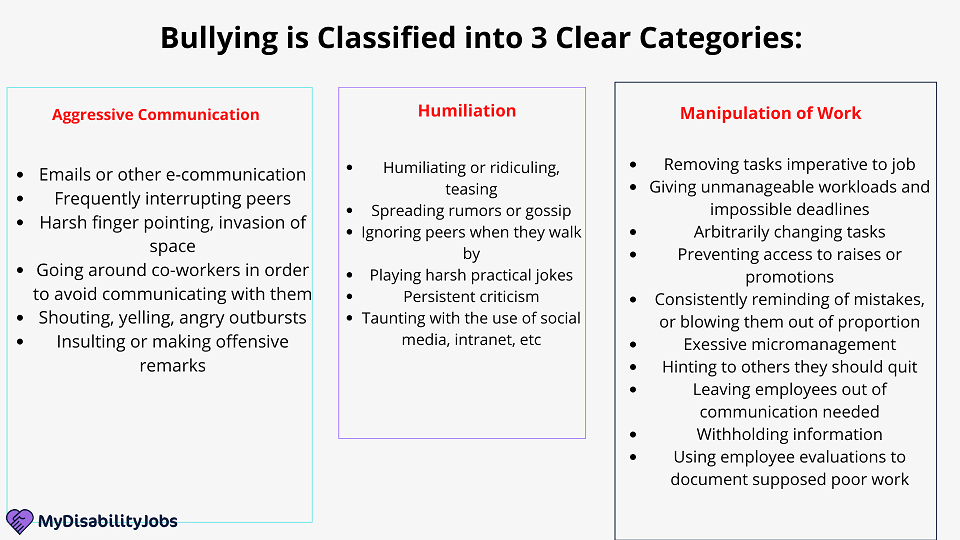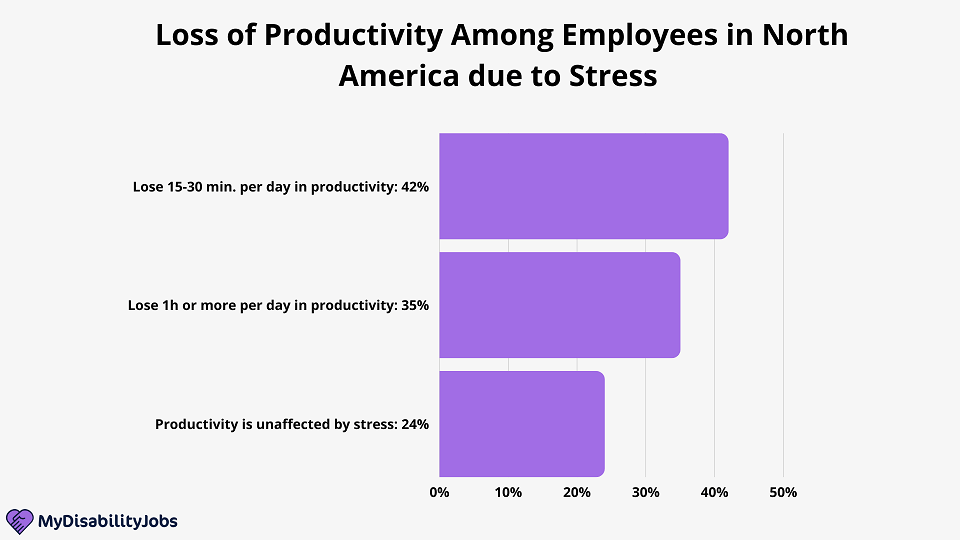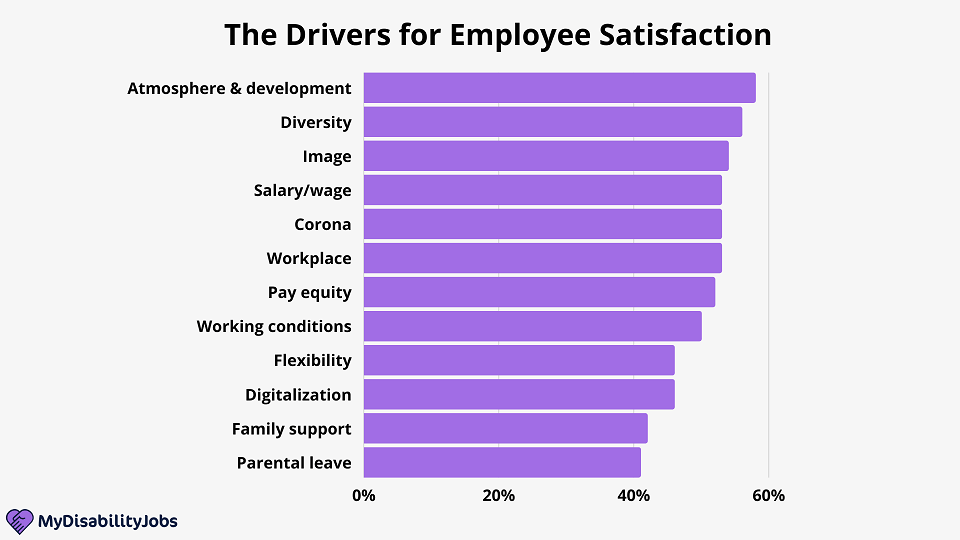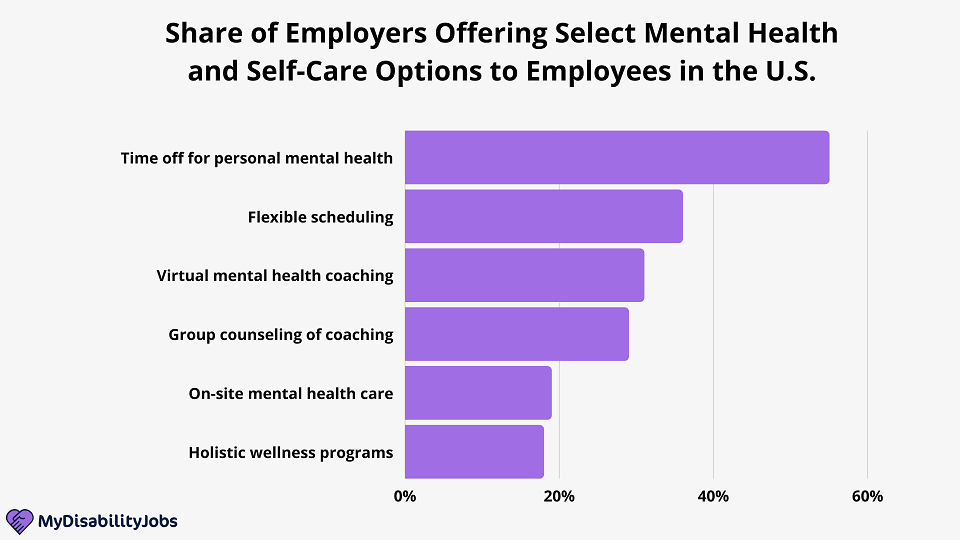Costs of Bullying and Harassment in the Workplace | Update 2024
For many it is well known that workplace bullying can have consequences at a personal, social and organizational level, leading the victim of bullying to be stressed to present conflicts with their loved ones, abandon their social ties (friends and partner), isolate themselves from their environment, among other consequences.
But for others, workplace bullying is not common, however, in our research about workplace bullying statistics, we see that 25% of the American workforce suffers or has suffered from workplace bullying at work. To put it in other terms, 1 in 4 people experience bullying at their workplace, for certain industries, these numbers can be as high as 70% which can be reflected in the productivity at work, the difficulties to achieve organizational goals, and having as well a significant financial impact.
In this research, you’ll find
-> Costs of Bullying and Harassment in the Workplace (Editors’ Picks)
-> Difference between bullying, harassment, and discrimination
-> The 3 categories of bullying at work
-> How much does bullying cost companies
-> How to calculate the bullying costs
-> How to prevent bullying in organizations
-> Importance of mental health and wellness in the workplace
Is your company offering jobs for people with disabilities? As an employer, you can publish your job offers on MyDisabilityJobs and reach thousands of qualified candidates.
Costs of Bullying and Harassment in the Workplace (Editors’ Picks)
- A bully can cost a single business up to $100,000 per year per victim.
- The cost of unfairness to American businesses is more than $64 billion annually.
- Bullying and other types of abusive behaviors cost businesses $300 billion annually in lost productivity, absenteeism, and turnover, as well as in increased medical costs.
- When a person is being bullied, they spend 52% of their day doing things other than working.
- Among federal employees: 57% reported they had been bullied over a two-year period. These bullies had collectively cost their organizations more than $180 million.
Difference between bullying, harassment, and discrimination
It is important to say that bullying is different from discrimination or harassment
- Bullying happens when the bully is an equal opportunist, or picking on people with motivations unrelated to race, gender, religion, or any other protected classes. There is no legal framework for bullying in the United States for harassment.
- Discrimination occurs when an employee or manager treats one group of people or individual less fairly than other groups of people because of a protected class, including race, religion, sex or gender, nationality, age, disability, genetics, or any other defining characteristic.
- Harassment is unwelcome conduct that is intimidating, hostile, or abusive; interferes with an employee’s ability to work; or is a condition of continued employment.
Source: Civility Patterns
The 3 categories of bullying at work
- Aggressive communication
- Manipulation of work
- Humiliation

Bullying or harassment cost productivity and money in some cases, but trying to provide an actual cost is a difficult task since there are many things involved and each case is vastly different and dependent upon such factors as:
- The size of the organization
- How the issue is handled
- Organizational culture
How much does bullying cost companies
Nonetheless, here are some estimates:
- A bully can cost a single business up to $100,000 per year per target in sick leave, reduction in work product, and time spent by management to intervene. That is what the pioneering researcher Heinz Leymann estimated in his article, published in Violence and Victims in 1990.
- Among federal employees: 57% reported they had been bullied over a two-year period. Tese bullies had collectively cost their organizations more than $180 million.
- The Corporate Levers Survey, a survey conducted by the Level Playing Field Institute (2007), estimated that the cost of unfairness to American businesses—including bullying (i.e., public humiliation)—is more than $64 billion annually.
- The American Psychological Association estimated that bullying and other types of abusive behaviors cost businesses $300 billion annually in lost productivity, absenteeism, and turnover, as well as in increased medical costs.
Source: Civility Patterns
How to calculate the bullying costs

To estimate the cost of workplace bullying, 5 different categories help to calculate how much it costs to have a bully in the company:
- Distraction from tasks
- Time lost
- Tangible costs
- Legal costs
- Communication breakdown
1. Distraction from tasks
Constant harassment at work results in a deterioration of mental health which causes the employee to be inattentive to their responsibilities and easily distracted, people simply cannot do top-quality work when they fear a co-worker or their boss. Instead, they are distracted from their work, and presenteeism (being at work physically but mentally in another place) greatly increases.
These are some of the things that keep them from working at their best:
- Reduced psychological safety and increased climate of fear
- Loss of motivation and energy
- Stress-induced psychological and physical illness
- Impaired mental ability due to anxiety and depression
- Decreased work quality and quantity
- Decreased loyalty to the organization
- Time spent looking for different work
- Time spent gossiping about the bully and his or her behavior
- Time spent by others comforting the target
The damage is so big that the Canadian Safety Council reported that when a person is being bullied, they spend 52% of their day doing things other than working. Instead, they are talking to others about their unhappiness, looking for other jobs, or pretending to work.
Source: Canada Safety Council
2. Time Lost
A study carried out by ComPsych Corporation indicates that thanks to work stress, the loss of time increases, showing that 42% of people lose between 15 or 30 minutes a day and that 35% lose 1 hour or more.

This factor can cause a loss of time and money, but this problem has different solutions:
- Calm and counsel people who feel targeted
- Appease, counsel, or discipline the perpetrators of the negative behavior
- Sooth victimized customers, suppliers, and other key outsiders
- Reorganize departments and teams
- Interview, recruit, and train replacements for departed employees who got caught up in the situation
- Hold meetings with decision-makers to determine what to do to resolve the problem
- Conduct investigations when grievances are filed
Source: ComPsych Corp.
3. Tangible Costs
Costs associated with time lost and presenteeism can certainly be hard to determine, however, there are some areas where the cost of bad behavior can be itemized. For example:
- Lost customers who were victimized, and left to employ your competitors
- Lost customers who heard about the bullying from unhappy former customers
- Anger management, communication, leadership, and other types of training
- Absenteeism and turnover
- Unemployment insurance
- Increased health insurance costs
- Workers compensation
4. Legal Costs
If someone sues for harassment, intentional infliction of emotional distress, hostility, or wrongful termination, it is going to cost you legal fees for counsel or settlement fees.
While there is no way to give an exact number, because all cases are one of a kind, the Center for Law and Public Policy released a study that described the “average” defense costs and jury awards in California employment law discrimination cases (Blasi & Doherty). The report indicates:
- The median settlement is $7,500
- The median legal costs to an employer through trial are $150,000. Even if the case goes to summary judgment—meaning a judge dismisses the charges before going to trial—the employer’s legal costs are about $75,000
- The median award for plaintiffs, paid for by the organization, is six figures.
5. Communication Breakdown
When people do not like each other or are intimidated by someone they work with, they are not collaborating, and they are not seeking answers to questions or asking for assistance in decision-making. This is highly detrimental to your organization’s ability to succeed – and that is costly.
Communication is one of the important things in a company because it helps to achieve goals the organization cannot succeed if interpersonal relationships are not intact because interpersonal relationships are the key to success.
How to prevent bullying in organizations
Bullying or harassment causes everyone, not just the targets of the behavior, to lose motivation, lose loyalty to managers and the company, stop caring about the quality of work, live life in fear, become anxious and depressed, and stop coming to work. As a result, your business processes will suffer and your bottom line will too.
Good relations among employees are the key to the company’s success. Without them, people aren’t talking to each other, being innovative, making the right decisions, or focusing on the right activities to maximize their productivity.
An analysis of the drivers for employee satisfaction in a wide range of industries says that “The atmosphere and development factor has the strongest relation with employee satisfaction”. This factor refers to the climate within the workforce and career opportunities. Diversity is the second most important factor. It includes diversity in different social groups and is one of the most discussed topics in today’s societies. It implies the importance of good relations inside the workplace and among different groups.

Source: Statista
For that reason, people are assets to be invested in, and when they break down so do efficiency, loyalty, quality, and customer service. When people are excited about their jobs and enjoy the people they work with, you have a self-sustaining system that reinforces performance and gives you a competitive advantage.
Importance of mental health and wellness in the workplaces.
Mental health and employment statistics are proof, when you have a positive and healthy workplace, you have improved internal relationships. By 2020, more companies include a plan for mental health and wellness in their plan of work, increase in those areas:

Here are the exact numbers:
| Mental Health and Self-Care Option | Percentage of Employers Offering it |
|---|---|
| Time off for personal mental health | 55% |
| Flexible scheduling | 36% |
| Virtual mental health coaching | 31% |
| Group counseling of coaching | 29ù |
| On-site mental health care | 19% |
| Holistic wellness programs | 18% |
Source: Aflac & Kantar
Is your company offering jobs for people with disabilities? As an employer, you can publish your job offers on MyDisabilityJobs and reach thousands of qualified candidates.
To conclude
Studies have shown how important preventing bullying in the workplace is and the costs it can have for an organization. Costs are different from case to case but always detrimental for a company. When people get along, they make better decisions, are more innovative, and they learn much quicker and much more.
When employees are learning and involved in decision-making, they are more engaged and loyal. When they are loyal, they come to work. When engaged employees are at work, they are producing and provide excellent customer service. When they are producing work and satisfying customers, they are meeting your organization’s goals, and in the end, that translates into bottom-line results.
FAQ
A bully can cost a single business up to $100,000 per year per victim.
Related articles
Statistics on Employees Burnout in the Workplace
Statistics of Diversity in the Workplace
Mental Health and Employment Statistics
Intellectual Disability Employment Statistics
Autism and Employment Statistics
Disability and Depression Statistics
Neurodiversity in the Workplace : Statistics


leave your comment